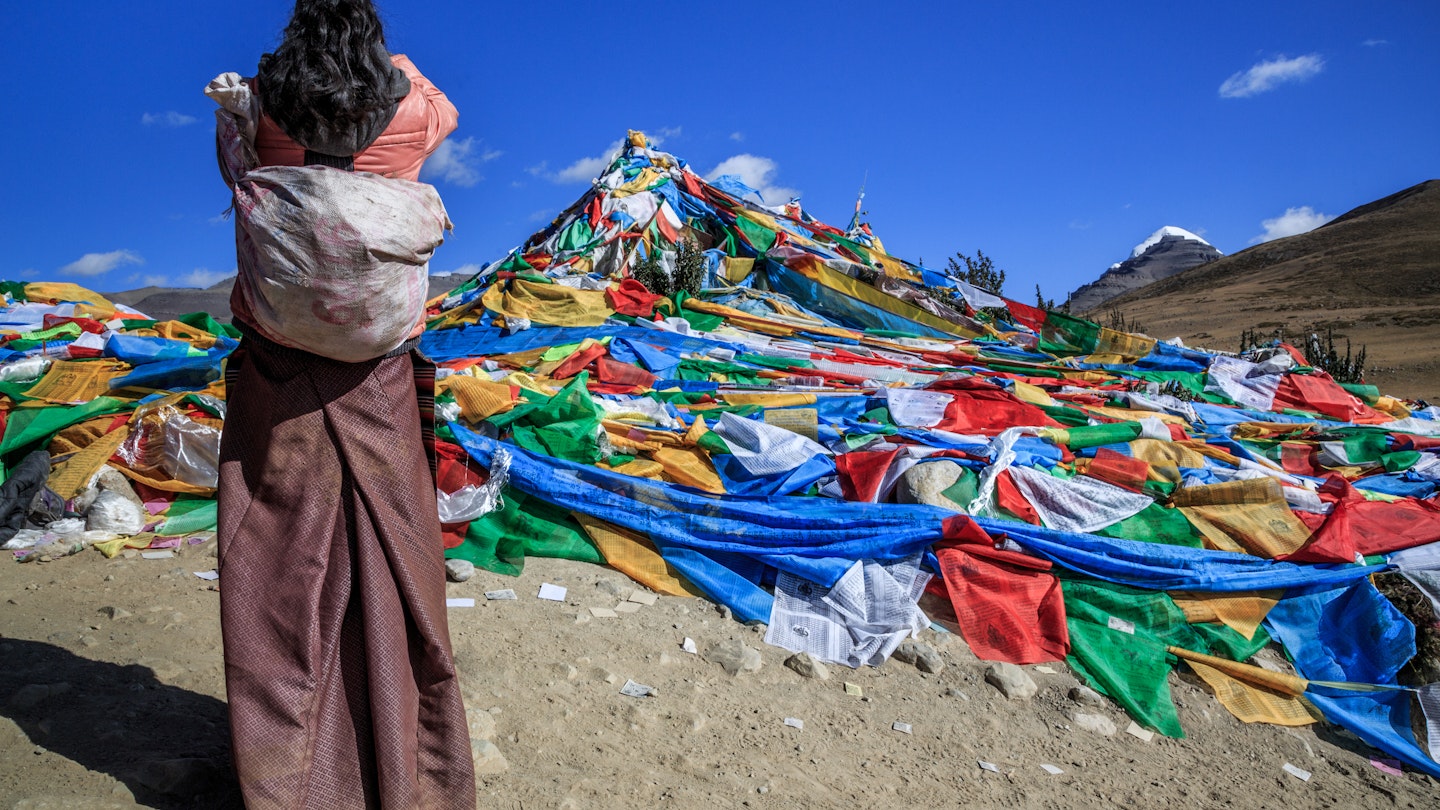Mount Kailash: A Holistic Journey
Sacred to over a billion Buddhists, Hindus, and Jains, enigmatic Mount Kailash is possibly the world’s holiest mountain. Pilgrims from across Asia embark on spectacular high-altitude treks through remote Western Tibet to pay homage and circumambulate this sacred mountain. This journey is considered one of the world’s great overland adventures and, despite the altitude, is surprisingly accessible.

Understanding Mount Kailash
Kailash, also known as Kang Rinpoche or ‘Precious Snow Mountain’ in Tibetan, derives its power from its unique geographical placement, standing alone in the Kangdise mountains of Tibet. This extraordinary four-sided peak rises sharply from the surrounding plain, with each face aligned to the cardinal directions. Significant rivers, including the Indus, Sutlej, Brahmaputra (Yarlung Tsangpo), and Karnali, originate from its foothills, enhancing its mythic stature.
For Tibetans, this sacred site symbolizes the victory of the Tantric magician Milarepa over his Bön rival, Naro Bönchung, thus establishing the supremacy of Buddhism. For Hindus, Kailash is the dwelling place of Shiva and his consort Parvati. Both faiths regard Kailash as the mythical Mount Meru, regarded as the axis of the universe. To honor its sanctity, the peak, standing at 6474m, remains unclimbed to this day.

Walking the Pilgrimage Circuit
The three-day clockwise trek around Mt Kailash is considered one of Asia’s classic treks. Although it isn’t overly strenuous, the trail reaches high altitudes, starting at 4670m and culminating at 5650m at the Drölma-La pass. Therefore, proper acclimatization and physical fitness are essential. The trek consists of relatively short days, and you can hire local yaks or porters to carry your belongings. Accommodation options vary from camping to simple lodging available at nearby monasteries.
Completing a single circuit—or kora—around Kailash is believed by many to erase the sins of a lifetime. At a site known as Shiva-tsal, visitors often leave personal tokens, symbolizing their old lives. Hardcore pilgrims may aim for 108 circuits, performing full-body prostrations as they traverse the sacred mountain. This pilgrimage is as much a spiritual quest as it is a physical endeavor.
The most popular time to undertake this journey is during the Saga Dawa festival, occurring between May and June, when thousands of pilgrims and tourists converge on Kailash to commemorate Buddha’s enlightenment. A large prayer pole is ceremoniously erected at Tarboche, marking the start of the trek for many. It is advisable to stay informed about the political situation, as the region might occasionally close to foreign visitors during this festival due to concerns over pro-Tibetan protests.
How to Get to Mount Kailash
The most efficient approach is to catch a flight or train to Lhasa from either China or Kathmandu. Spending a few days acclimatizing in Lhasa is recommended before embarking on a four-day journey to the mountain in the far reaches of Western Tibet. Along the way, consider pausing in the Tibetan town of Shigatse and visiting the renowned Sakya Monastery, with an option to detour to the dramatic north face of Everest Base Camp.
In recent years, infrastructure improvements have made the drive to Western Tibet more comfortable and scenically captivating. Conversely, travelers may also return via the Nepal border at Rasuwagadhi after descending through the breathtaking Kyirong Valley.

Attractions Around Kailash
Situated at the base of Mt Kailash is Lake Manasarovar (Mapham Yum-tso), revered as sacred by both Tibetans and Hindus. Pilgrims often circle the lake in four days, although driving around is now feasible, allowing you to stop and stay at picturesque lakeshore monasteries such as Seralung, Gossul, Trugo, and Chiu. The breathtaking views of the lake’s cobalt waters framed by the majestic peaks are truly magnificent.
A day’s drive from Kailash offers access to Thöling Monastery and the archaeological site of Guge, a 10th-century Buddhist kingdom known for its remarkable art influenced by Kashmiri and Ladakhi styles. Exploring Guge’s countryside, tunnels, and hilltop structures promises an unforgettable experience.
Permits to Tibet
All foreign tourists venturing into Tibet must arrange travel through local Tibetan agencies to obtain a Tibet Tourism Bureau permit. This documentation should be gathered in Lhasa or Kathmandu prior to your arrival in Tibet. It’s essential to allow ample time for your agency to secure necessary permits, especially for Western Tibet. Ensure you also possess a valid China visa.





